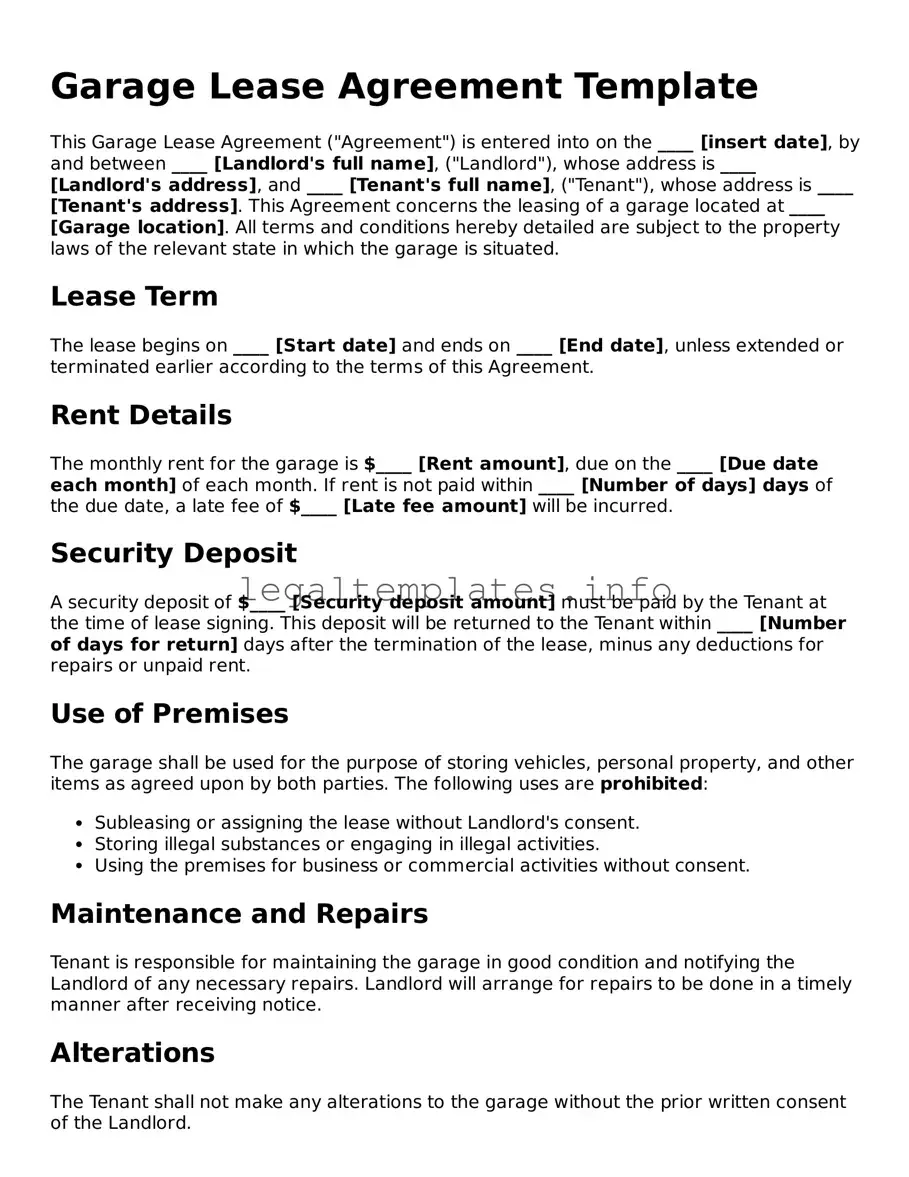Garage Lease Agreement Template
This Garage Lease Agreement ("Agreement") is entered into on the ____ [insert date], by and between ____ [Landlord's full name], ("Landlord"), whose address is ____ [Landlord's address], and ____ [Tenant's full name], ("Tenant"), whose address is ____ [Tenant's address]. This Agreement concerns the leasing of a garage located at ____ [Garage location]. All terms and conditions hereby detailed are subject to the property laws of the relevant state in which the garage is situated.
Lease Term
The lease begins on ____ [Start date] and ends on ____ [End date], unless extended or terminated earlier according to the terms of this Agreement.
Rent Details
The monthly rent for the garage is $____ [Rent amount], due on the ____ [Due date each month] of each month. If rent is not paid within ____ [Number of days] days of the due date, a late fee of $____ [Late fee amount] will be incurred.
Security Deposit
A security deposit of $____ [Security deposit amount] must be paid by the Tenant at the time of lease signing. This deposit will be returned to the Tenant within ____ [Number of days for return] days after the termination of the lease, minus any deductions for repairs or unpaid rent.
Use of Premises
The garage shall be used for the purpose of storing vehicles, personal property, and other items as agreed upon by both parties. The following uses are prohibited:
- Subleasing or assigning the lease without Landlord's consent.
- Storing illegal substances or engaging in illegal activities.
- Using the premises for business or commercial activities without consent.
Maintenance and Repairs
Tenant is responsible for maintaining the garage in good condition and notifying the Landlord of any necessary repairs. Landlord will arrange for repairs to be done in a timely manner after receiving notice.
Alterations
The Tenant shall not make any alterations to the garage without the prior written consent of the Landlord.
Termination and Renewal
This Agreement will automatically end on the termination date mentioned above. For renewal, both parties must agree in writing at least ____ [Number of days notice for renewal] days before the current lease ends.
Governing Law
This Agreement shall be governed by and construed in accordance with the laws of the State in which the garage is located.
Signatures
By signing below, both the Landlord and Tenant agree to all terms and conditions of this Garage Lease Agreement.
Landlord's Signature: ___________________________ Date: ____ [Date]
Tenant's Signature: ___________________________ Date: ____ [Date]
